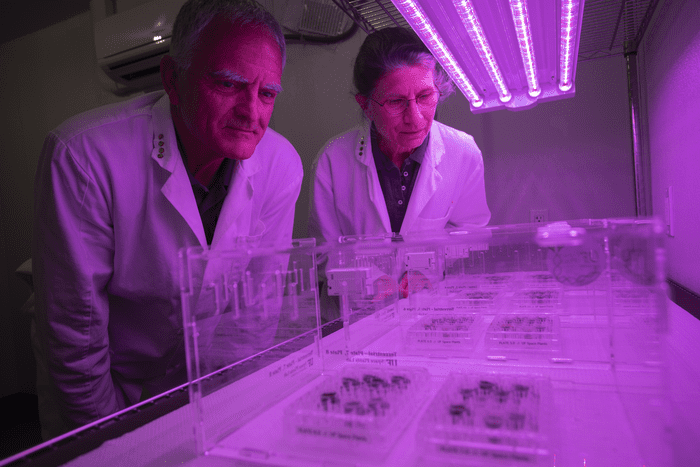A research team out of the University of Florida has just made a historic breakthrough in the world of space science. For the first time, scientists have grown plants from moon soil. The event marks a historic milestone in lunar and space exploration.
In a new paper published in the journal Communications Biology, the UF research team showed that plants can successfully sprout and grow roots in lunar soil. Their study also investigated how plants respond biologically to the Moon’s regolith, which is drastically unique compared to soil found on Earth.
While plants have been successfully grown on the International Space Station the finding is critical for long-distance travel.
“For future, longer space missions, we may use the Moon as a hub or launching pad,” said Rob Ferl, one of the study’s authors and professor of horticultural sciences at the UF Institute of Food and Agricultural Sciences (UF/IFAS). It makes sense that we would want to use the soil that’s already there to grow plants. So, what happens when you grow plants in lunar soil, something that is totally outside of a plant’s evolutionary experience? What would plants do in a lunar greenhouse? Could we have lunar farmers?”
The researchers only had a limited amount of soil to work with, 12 ounces to be exact, and had to do everything in mini. The soil, on loan from NASA, was collected during the Apollo 11, 12, and 17 missions. The Florida scientists applied three times over 11 years for the opportunity to carry out their experiment.
To grow their tiny lunar garden, the team used thimble-sized wells in plastic plates normally used to culture cells. Each well served as a pot and once they filled each “pot” with roughly a gram of lunar soil, they moistened the regolith with a nutrient solution and added a few seeds from an Arabidopsis plant. Arabidopsis is commonly employed in the plant sciences because its genetic code has been fully mapped. Growing Arabidopsis in the lunar soil gave more comprehension into how the soil impacted the plants, down to the level of gene expression. Nearly all of the seeds sprouted.
Though the plants sprouted, they showed signs of impaired growth compared to the control group planted in Earth soil. Some of the plants grown in the lunar soils were smaller, grew more slowly, and had shorter roots, indicating stunted growth. The fact that the plants had serious trouble growing the regolith could also be seen in the plants’ genetic activity.
“At the genetic level, the plants were pulling out the tools typically used to cope with stressors, such as salt and metals or oxidative stress, so we can infer that the plants perceive the lunar soil environment as stressful,” said Anna-Lisa Paul, one of the study’s authors. “Ultimately, we would like to use the gene expression data to help address how we can ameliorate the stress responses to the level where plants — particularly crops — are able to grow in lunar soil with very little impact to their health.”
Just like plants differ on Earth based on their location, some of the attributes of the lunar plants could depend on the area of the Moon they were collected.
For instance, the researchers found that the plants with the most signs of stress were those grown in what lunar geologists call mature lunar soil. These mature soils are those exposed to more cosmic wind, which alters their makeup. On the other hand, plants grown in comparatively less mature soils fared better.
Growing plants in lunar soils may also change the soils themselves.
“The Moon is a very, very dry place,” said Stephen Elardo, an assistant professor of geology at UF. “How will minerals in the lunar soil respond to having a plant grown in them, with the added water and nutrients? Will adding water make the mineralogy more hospitable to plants?”
The team plans to follow up and build on the groundbreaking discovery. It’s not clear that food crops could ever be grown viably in lunar soil, but there’s only one way to find out.
“We wanted to do this experiment because, for years, we were asking this question: Would plants grow in lunar soil,” Ferl said. “The answer, it turns out, is yes.”










